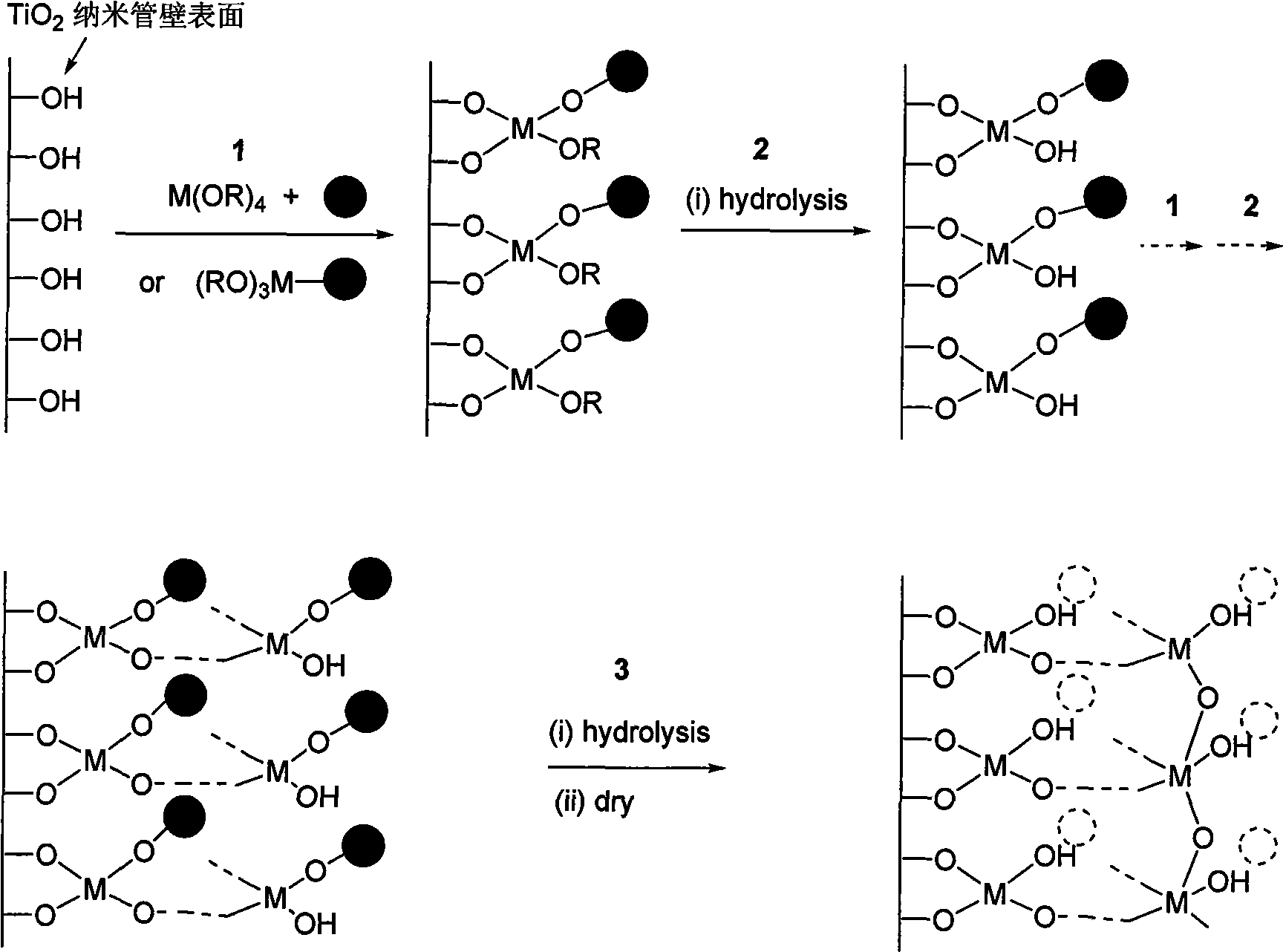TiO2 nanotube with molecular imprinting functionalization
A molecular imprinting and nanotube technology, applied in the direction of titanium dioxide, titanium oxide/hydroxide, etc., can solve the problem of poor mechanical and thermal stability of organic polymer imprinted matrix, affecting light absorption and charge transport, and unstable shape memory. and other problems, to achieve the effect of reducing entrapment phenomenon, reducing non-specific adsorption, and high mechanical strength
- Summary
- Abstract
- Description
- Claims
- Application Information
AI Technical Summary
Problems solved by technology
Method used
Image
Examples
Embodiment 1
[0019] (1) TiO 2 Preparation of nanotubes
[0020] Under 35-60V DC voltage, pure titanium or titanium alloy is used as anode, platinum sheet is used as cathode, and TiO is prepared in an electrolyte mixed with hydrofluoric acid and dimethyl sulfoxide with a mass percentage of hydrofluoric acid of 0.5-3%. 2 The nanotubes are calcined at 400-500° C. under aerobic conditions for 4-6 hours to crystallize and form them.
[0021] (2) Imprinted functionalized TiO 2 Nanotube preparation
[0022] Prepared by surface sol-gel technology: the preparation process is as follows figure 1 shown. figure 1 Among them, M=Zn, R is isopropyl or n-butyl, ● represents organic pollutant molecules, Represents the vacancies left in the film after removal of organic pollutant molecules.
[0023] TiO 2 The nanotubes are immersed in an alcohol solution of tetraisopropyloxyzinc containing octabromodiphenyl ether imprinted molecules for a period of time, then hydrolyzed, and then dried in air. Accor...
Embodiment 2
[0025] In Example 1, M is replaced by Ti, and all the other conditions are the same as in Example 1, and octabromodiphenyl ether imprinted TiO can be prepared. 2 Thin film modified TiO 2 nanotube.
Embodiment 3
[0027] Using Zr instead of M in Example 1, all the other conditions are the same as in Example 1, and octabromodiphenyl ether imprinted ZrO can be prepared. 2 Thin film modified TiO 2 nanotube.
PUM
 Login to View More
Login to View More Abstract
Description
Claims
Application Information
 Login to View More
Login to View More - R&D
- Intellectual Property
- Life Sciences
- Materials
- Tech Scout
- Unparalleled Data Quality
- Higher Quality Content
- 60% Fewer Hallucinations
Browse by: Latest US Patents, China's latest patents, Technical Efficacy Thesaurus, Application Domain, Technology Topic, Popular Technical Reports.
© 2025 PatSnap. All rights reserved.Legal|Privacy policy|Modern Slavery Act Transparency Statement|Sitemap|About US| Contact US: help@patsnap.com

